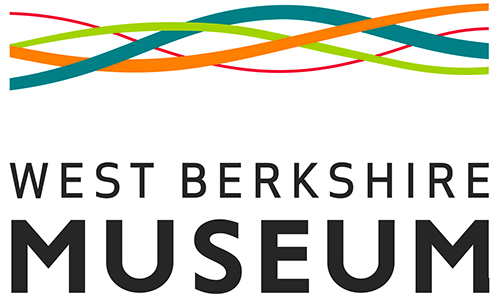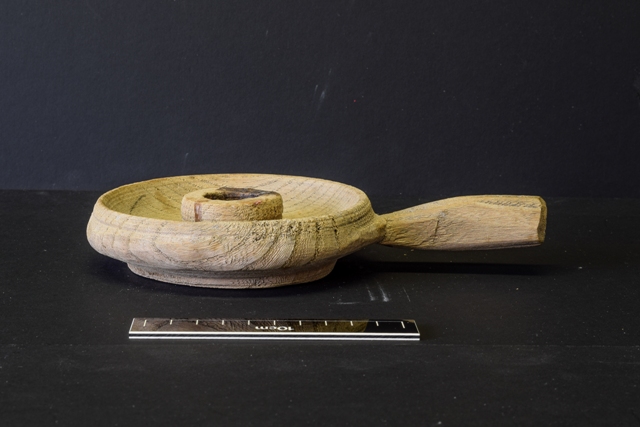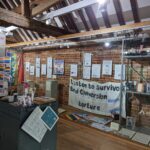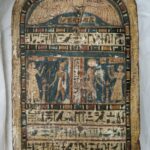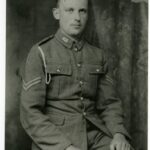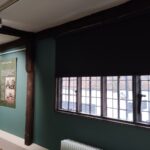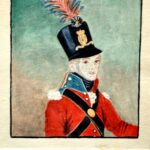George Lailey 1869 – 1958, ‘The Last Bowl Turner in England’
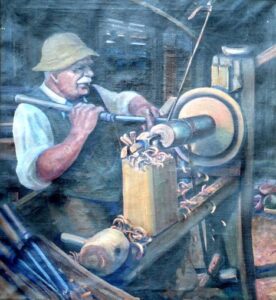
Oil painting of George William Lailey in his workshop. Painted by Mr G W Allinson, c.1950.
In the spring of 1927 the journalist H. V. Morton left London in search of an older, more rural and idyllic England. The first place he stopped was Bucklebury Common, West Berkshire, and there he met a man carrying a wooden bowl. ‘That,’ the man told him, ‘is the work of the last bowl-turner in England. You ought to look at his workshop, for you will never see another one like it!’
The bowl turner was George Lailey.
Morton’s book, ‘In Search of England’, became a best seller and George Lailey became famous, but he never wanted to make money or to change his simple lifestyle. He told Morton, “I like making bowls better than I like making money.” Customers beat a path to his door and usually asked George to sign the bowl he made for them and to allow them to take his photograph.
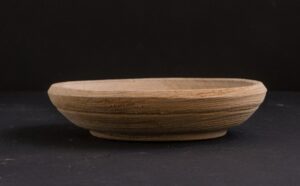
Wooden bowl made by George William Lailey, 1957.
George was the third generation of the Lailey family to work as bowl turners on Bucklebury Common. The youngest of eleven children, he started working for his father, William, in 1878 at the age of nine and worked at his lathe until the last day of his life. The Lailey family lived in a cottage at Byles Green on the edge of Bucklebury Common where they were also farmers.
George Lailey took over the family business when his father died in 1912, his mother helping to cut the logs with a cross cut saw. During the First World War all his employees left him but he was exempted from military service because he made ladles for munitions factories. After the war George worked alone and went back to making bowls and candlesticks on his traditional pole lathe.
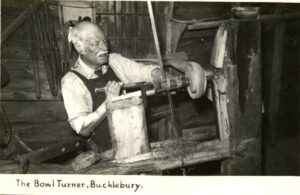
Postcard of George William Lailey working a pole lathe in his workshop, c.1950.
When Morton visited in 1927, George Lailey was still working at the tumbledown hut that his grandfather had built in about 1826 on the common at Turners Green. Outside the hut great elm logs were stacked and inside there was a sunken floor, covered in elm wood shavings. The hut was lit by a single hurricane lamp as there was no electricity. In the centre was George’s pole lathe, built to a design which had not changed since Anglo Saxon times. A young alder sapling was connected to the lathe by a leather thong and George used a variety of knives to shape his bowls. One of his specialities was to make a nest of bowls cut from a single block of wood. His customers were mostly local people and markets but George and his father had also supplied orders from Harrods and other London stores at the height of the Arts and Crafts movement of the early 20th century.
West Berkshire Museum has several of George Lailey’s hand turned bowls of varying sizes in its collection along with wooden candlesticks and a wooden biscuit box. The museum also has a wonderful portrait of him working at his lathe in his workshop, painted by G. W. Allinson in about 1950.
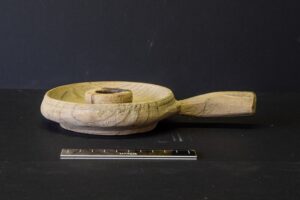
Candleholder, elm wood, made by George William Lailey. Ink inscription on underside ‘G W Lailey Feb 28 1936’.
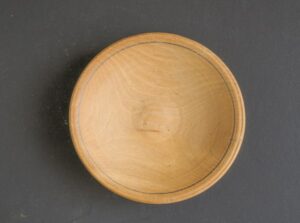
Wooden bowl made by George William Lailey, 1951.
The Museum of English Rural Life in Reading also holds many objects made by George Lailey and includes the contents of his workshop, exactly as it was when he died in 1958.
Researched and written by Valerie Pollitt, Museum Volunteer.
